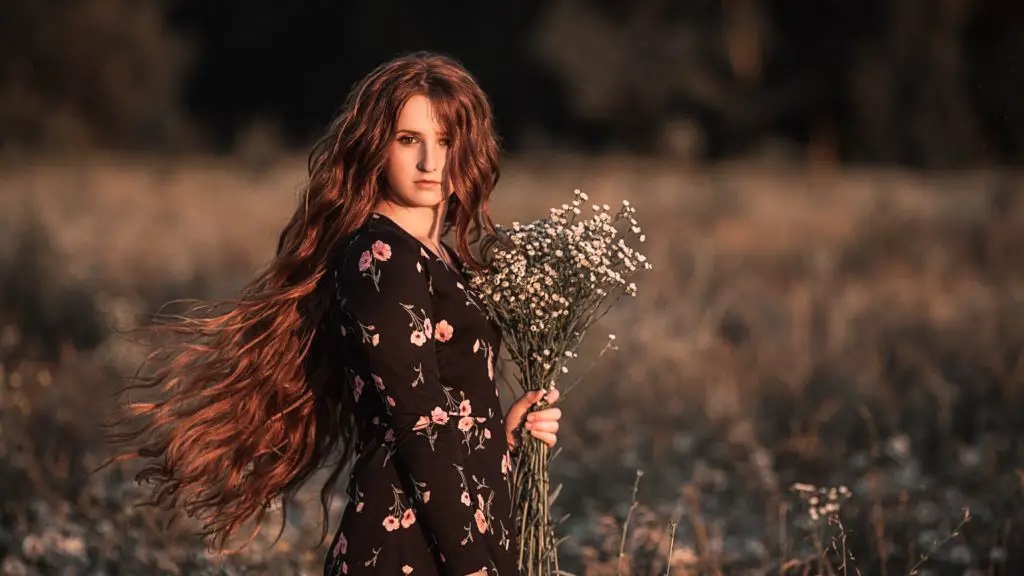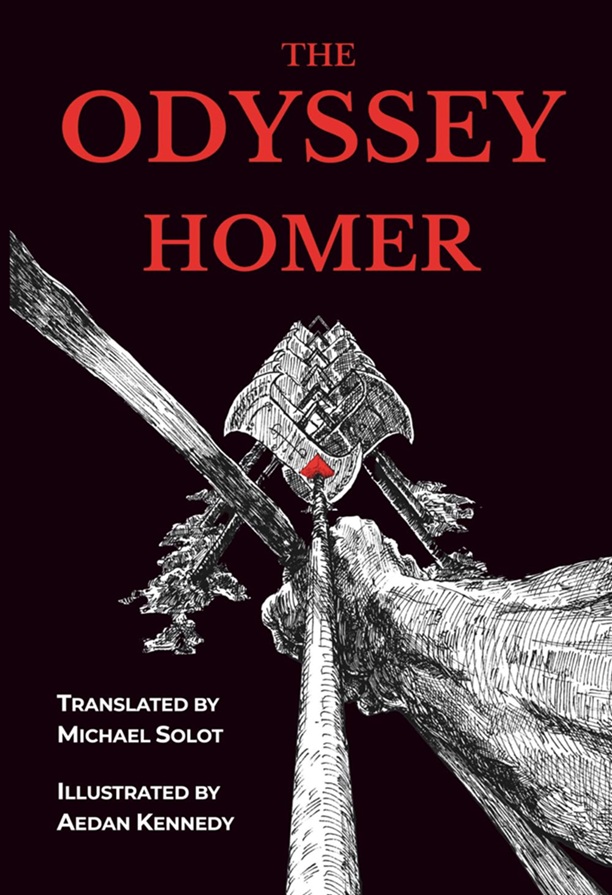Old Chestnut
I’m the spirited girl with the chestnut hair,
Common countenance pale, smile occasionally stressed,
High forehead and wide, sculpted jawline square,
A pert single chin, curving neck recessed
Over straight honest shoulders of soldierly flair,
Alert at beginning a whimsical spree.
My first tresses were trifling and thin as could be,
But looser and longer has always felt best,
Or swirled round a cinnamon stick in my hair,
Hair streaming in simmering showers and free
To wave through clear spring waters’ chill thoroughfare,
Or flow with the surf on its foaming salt crest.
The color mulls autumn confectionery,
Mont-Blanc aux marrons, kuri cakes of the best,
Warm milk as a rare chestnut delicacy,
Purée circling holiday turkey with glee,
Sweet chocolate pavlova, then cognac to share,
Or Assam’s amber brightness at afternoon tea,
Bronze ribbons of succulent pasta compressed
From flour of choice nuts, mixed with artichokes dressed
In sauce of fresh candied cream’s intricacy.
The sunniest undertones hide in my hair
With natural caramel highlights to spare,
While seasonal breeze whispers wonderingly,
Cool currents, with smokiest scent coalesced,
Conduct an orchestral Oktoberfest
Of schottische and waltzes for brass and celeste.
My canso sings mingled things gaily expressed,
Subtle trobairitz verse with brunette reverie
In discourse dishevelled like chestnutty hair,
I whirl lengthy skirts and a prayer through the air,
Aware that new friends take their chances on me,
Old chestnut a-twirling between good and fair.
.
Mont-Blanc aux marrons: a dessert of sweetened chestnut purée
kuri: Japanese for “chestnut”
schottische: a country dance
celeste: a musical instrument
canso: a Provençal poem
trobairitz: female troubadour
.
.
Margaret Coats lives in California. She holds a Ph.D. in English and American Literature and Language from Harvard University. She has retired from a career of teaching literature, languages, and writing that included considerable wrk in homeschooling for her own family and others.















i am so impressed by the continuation of the rhyme throughout such a lengthy poem of exceptional verbiage and sensory impact. I was thankful for the assistance with the notes at the end explaining some of the initially vague meanings of the words “foreign” to me. This is one of the poems that leaves that pleasant taste in my mind of savoring over and over the wonderful writing by rereading it again and again and reveling in its majesty.
Roy, I’m very happy this elaborate concoction offers a pleasant taste that’s just as savory on several re-readings. Because it is a self-portrait of sorts, I revel in your characterization of it as a poem with majesty. In praising the rhyme, and in mentioning both “exceptional verbiage” and “sensory impact,” you could hardly return a more pleasing compliment!
This is quite a rhyme-feast! Rhymes on -est, -air, and -ee are plentiful in English, but managing to find and arrange a perfectly congruent set of them in a poem of this length is a real feat. Also, the multiple meanings of “chestnut” are very expertly interwoven — the nut, the color, the foods, the candy, the hair, and finally the central metaphor of “an old chestnut” (something long familiar and established in common memory).
One minor thing: in the last line, the a-prefixing in the word “atwirling” needs a hyphen between the “a” and the present participle that follows it.
Thank you so much, Joe, for appreciating the rhyme and the “expert” interweaving of multiple meanings for “chestnut.” This is a poem short on meaning (“the point I intend to make” or “my message” or “what I want to do”). It relies almost entirely on artistry for effect–and does not insist on any particular effect. For you especially, I’m glad it’s a feast in consideration of an old metaphor.
About the last line, I agree the word should be “a-twirling.” And I hope our moderator will notice this. I had originally written simply “atwirl” (which is correct as an adjective), but the participle works by imagining the longer old-fashioned phrase “at twirling,” which is best represented by “a-twirling.”
Love the descriptive rhyme and naturally, it epitomizes a confident and content persona. Very nice.
Thanks, Laura. Glad you were looking when the poem came out! I appreciate the confirming comment from a friend acquainted with me and my chestnut hair.
I still haven’t quite figured out the rhyme scheme, but I look forward to its unraveling. This is quite the lyric feat, and I want to meet this spirit-woman who leaves her traces stanza after stanza. As for chestnuts, my experience in NYC tells me that the smell of them being roasted by sidewalk vendors is much better than the experience of actually peeling and eating them. Chestnuts pale when compared to pistachios and shrimp, but they are in the same universe. This might be the best poem of the year.
C. B., if this Oktoberfest of nutty rhyme could be best poem of the year, I’ll only say it took a great deal of work at tuning to get there. No regular rhyme scheme, but what I sometimes call “floating rhyme.” That means every line must rhyme with any one of the chosen rhyme sounds, as best suits the sense of the poem. This fancy-free piece does not have obvious logic, so its sense is to make the most of chestnuts and loosely flowing hair. The limiting difficulty is only three rhyme sounds. However, if I have rightly written out the irregular scheme in a, b, and c (with A for the repeated word “hair”), each of the eleven tercets has a different pattern. And each of the three sounds is used as end rhyme the same number of times. That was not a rule to follow, but it turned out that way, giving me something of a tour-de-force like an elaborate old French form.
abA bac cbA cab cbc cac bbc Aac bbb bcA aca
I’ll agree about the surpassing fragrance of roasting chestnuts in New York City, but for taste nothing equals the local brand of chestnut milk sold warm on cool nights in Kyoto. Thanks for this superlative comment!
See I made a mistake in writing out the rhyme scheme. That first tercet should be Aba.
The lasting impression of this poem is of beauty and the delicate dancing movements of a free spirit, interspersed with sensual sights, sounds and smells.
One to come back to!
Thank you, Paul, for describing the poem’s “lasting impression” and thus suggesting the word “impressionistic.” That’s really apt for a portrait poem without a message to convey. And I am glad its effect may have you coming back!
Margaret, I’m sorry to be arriving late to the comments section on this delightful poem. And delightful it is! It is a self-portrait – slightly romanticized – in which you charmingly and musically produce a fugue of chestnut meanings and images – a fantasia, really, with references to everything from hair-color to Thanksgiving dinner to the schottische – but always returning to the hair as the central motif.
You make particular use of culinary images (chestnuts, after all) but also many musical and dance images. Ultimately I see this as a musical poem. Part of that is your tetrametric dancing tone. Part of it is your limiting the poem to three rhymes each in a way which makes each rhyme analogous to a particular dance step or, perhaps, a particular chord within a chosen harmonic range. And though you rigorously maintain your rhymes they are strewn throughout the piece as unpredictably as notes in a fugue. You mention a waltz and that fits in nicely with the 1-2-3 tercets.
This is truly a “whimsical spree” and as a self-portrait it feels particularly personal. I am reminded of much of the poetry of Emily Dickinson who has offered poetry of self-aware similar tone, albeit without the rigor of your rhymes and the generous cultural range of your images. Although this may seem like a simple poem, that is deceptive. A great deal of craft has gone into this piece, including your starting out the piece in the most material of terms – an artist’s description of your physical appearance – only to have the poem deepen and expand with references to every single sense.
Your touch here is so light and giddy. Of all of your works, this sunny, whimiscal piece is one of my favorites!
Without a song or a dance what are we? Thank you, Brian, for appreciating this whimsical piece which is, as you say, not simple. There is very much of the personal in it, starting with my “tresses trifling and thin as could be” in babyhood. I have my portrait as a one-year-old, with just enough hair to make a tiny peak on the top of my head. As an older child I decided on the color “chestnut” for my much longer hair as I watched it flow in all those subtropical swimming places of stanza 4. And I collected the generous cultural range of images in my studies and travels as an adult. Though I am an
“old chestnut,” there is still a future indicated among the foods. You are what you eat, but I haven’t yet found or tasted chestnut pasta. The flour imported from Italy is available, but I may have to make the fettucine myself. Just as I am a maker of poems! This is one where I bring in all the senses; I’m happy that you feel the tone is light and giddy and sunny. It’s unlike most of my others, and I’m very pleased that it finds a place as one of your favorites.
Phillip, I thank you for the unexpected favor of a response, and hope this will be visible to you as an acknowledgement. I did write this poem as something of light tone yet deep shading. Sorry to hear of your difficulties–wishing you a quick and happy resolution.
This is a wonderful piece, packed with vivid imagery and rife with allusion — all stemming from the simplest of themes: hair color. I also enjoy how the theme is deeply personal yet depersonalized: it could be from your perspective, but doesn’t have to be. Instead, we have a nameless maiden singing about the luxuriance of her chestnut tresses. This was a delight to read.
Many thanks, Adam. It’s delightful to know this personal song could accord with any other chestnut-tressed maiden, or with any gentleman thinking of her. It is all mine, here and now, but I did have in the back of my mind “the girl with golden hair,” Agnetha Faltskog singing “Thank You for the Music.” I have a Swedish great-great grandmother, but no picture of her. And it is wondrous to see how resonant a simple theme can be.